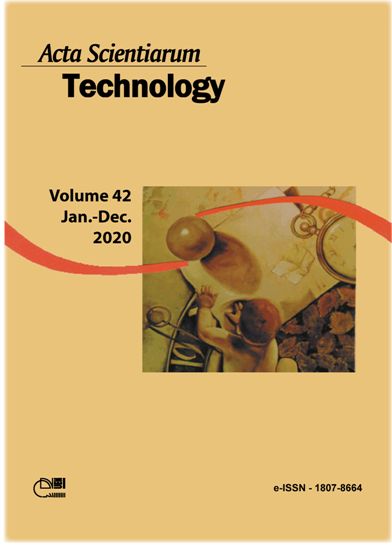Optimal linear control design applied to the synchronism of vocal folds with asymmetric stiffness
DOI:
https://doi.org/10.4025/actascitechnol.v42i1.46943Palavras-chave:
control method; lyapunov exponents; chaos; LQR; asymmetry.Resumo
The emission of sounds is an important means of communication between animals, which helps them to find a partner, establish their territory, and even alert other members of a population about a possible threat. In human beings, the emission of sounds allows an even more specialized communication, because it possibly render a wide exchange of ideas and knowledge. The most important process related to voice emission is the movement of vocal folds. Therefore, their proper functioning is essential for the emission of sounds. Vocal folds possess a muscular tissue, and are located inside the larynx. When air passes through them, they vibrate, thus emitting the sound by which we communicate. The vocal folds are elastic fibers that distend or relax under the action of the larynx muscles, thus modulating and modifying the sound as we speak or sing, for example. This complex process is modeled by a system of differential equations. In this paper, we present a study about asymmetric vocal folds, where a difference in their stiffness is considered. The objective of this study is to synchronize the movement of vocal folds caused by that asymmetry through the optimal linear control method, showing their functioning for different values of stiffness for each vocal fold. In this way, the control design has shown to be efficient, producing a good functioning of the vocal folds and rendering the emission of sound possible even in diseased vocal folds.
Downloads
Downloads
Publicado
Como Citar
Edição
Seção
Licença
DECLARAÇíO DE ORIGINALIDADE E DIREITOS AUTORAIS
Declaro que o presente artigo é original, não tendo sido submetido í publicação em qualquer outro periódico nacional ou internacional, quer seja em parte ou em sua totalidade.
Os direitos autorais pertencem exclusivamente aos autores. Os direitos de licenciamento utilizados pelo periódico é a licença Creative Commons Attribution 4.0 (CC BY 4.0): são permitidos o compartilhamento (cópia e distribuição do material em qualqer meio ou formato) e adaptação (remix, transformação e criação de material a partir do conteúdo assim licenciado para quaisquer fins, inclusive comerciais.
Recomenda-se a leitura desse link para maiores informações sobre o tema: fornecimento de créditos e referências de forma correta, entre outros detalhes cruciais para uso adequado do material licenciado.



















